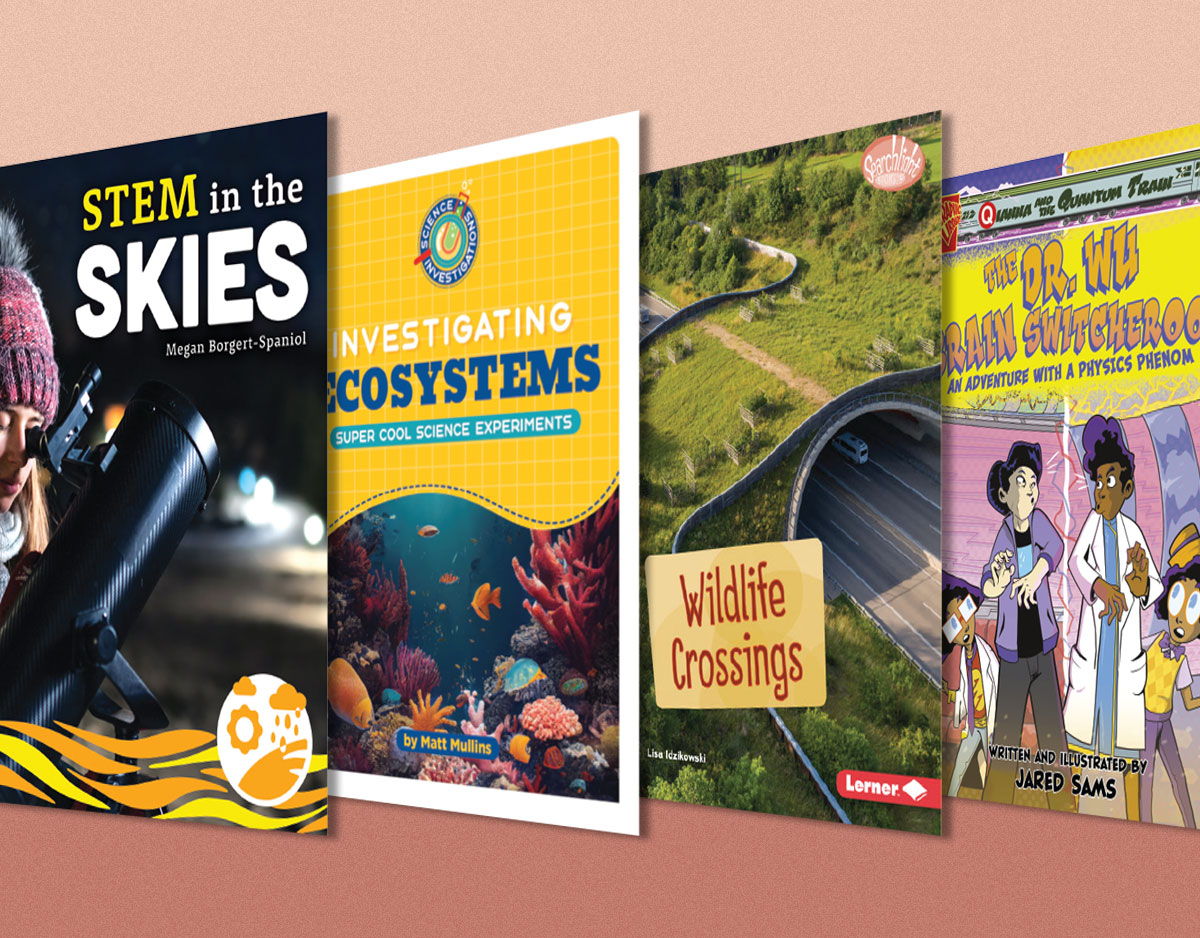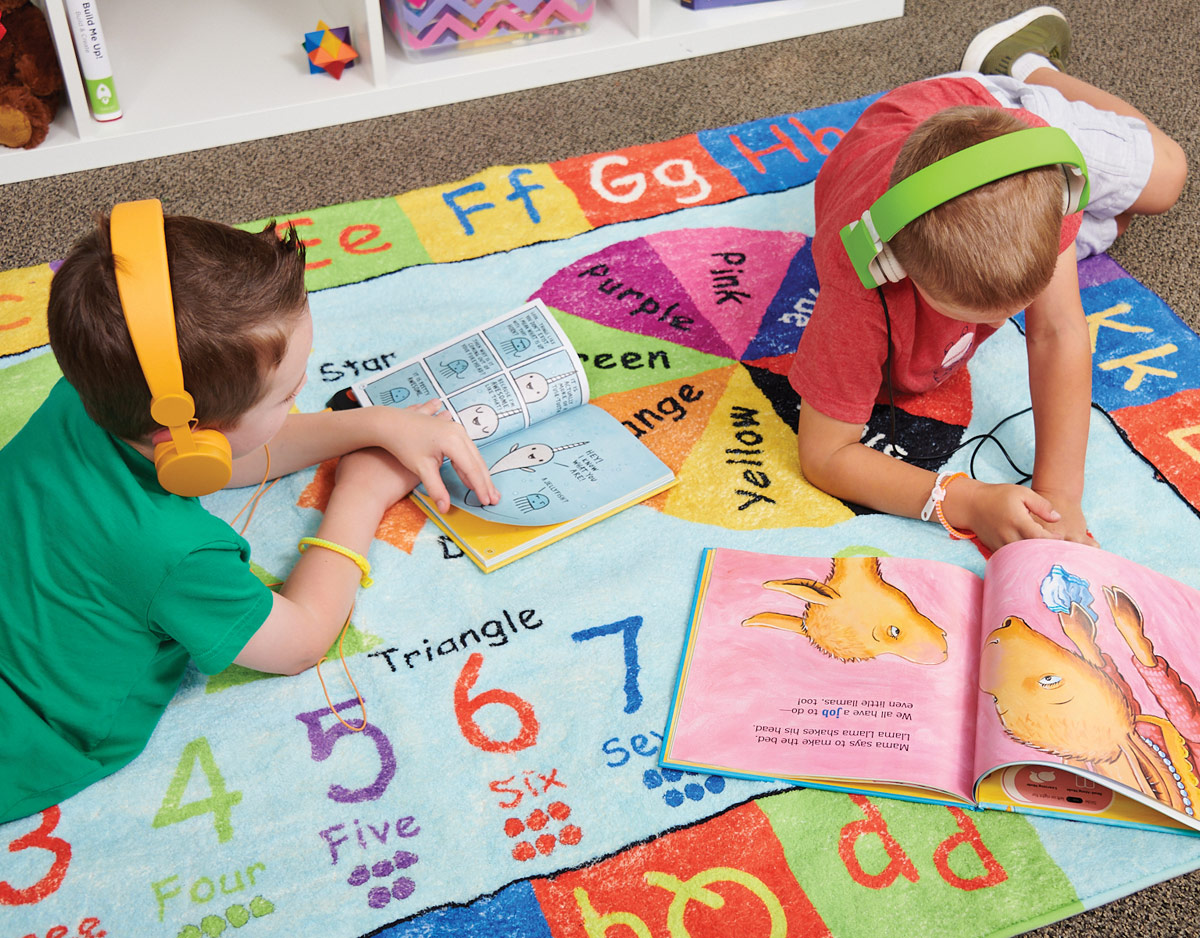Mysterious Patterns: Finding Fractals in Nature
Mysterious Patterns: Finding Fractals in Nature
Written by Sarah C. Campbell; Photographs by Sarah C. Campbell and Richard P. Campbell
Published by Boyds Mills Press, 2014
ISBN# 978-1-62091-627-8
Grades K and up
Book Review
If you had to name the shape of a broccoli head, what would you say? What about the shape of a river from an aerial point-of-view? And what about the human lungs? In her photo essay Mysterious Patterns: Finding Fractals in Nature, Sarah C. Campbell provides students with the vocabulary needed to answer those questions. A fractal, she explains, starts with one shape and “changes in the same way over, and over, and over again.” Teaming up with husband and fellow photographer Richard P. Campbell, she provides lots of visual examples of what a fractal is and what it isn’t. Close-up photos of Queen Anne’s lace, lightning, and fern leaves demonstrate the concept of a fractal, with some photos zooming in on the tinier parts of the object to illustrate how their structure mimics the larger one. Uncomplicated explanations also make it clear how the designs of a pineapple skin and a swallowtail caterpillar’s stripes, though repeated across their surfaces, are not fractals. Woven throughout the text is an introduction to Benoit Mandelbrot, the perceptive mathematician who coined the term, and a set of directions for making your own fractal nicely rounds out the discussion. An afterword by Mandelbrot’s colleague at Yale provides more information about him as well as examples of manmade fractals that are integral to modern society. A picture book made to fascinate young minds with math and science, Mysterious Patterns is a valuable addition to classrooms everywhere.
Teaching Ideas and Invitations
Fractals Gallery. Invite students to search their environments for the fractals that can be found around them. Have them bring in examples of those fractals, or ask them to take photos of the objects either with a tablet or a smartphone. Encourage them to keep their eyes open for fractals every time they step outside, and remind them that examples are everywhere: a tree on the way home, a broccoli floret at the grocery store, maybe even a design on a t-shirt. Set up a bulletin board, a bookshelf, or a corner of the classroom as a gallery to showcase student’s examples of fractals.
ADVERTISEMENT
ADVERTISEMENT
The Influence of Benoit Mandelbrot. Michael Frame’s afterword describes Mandelbrot’s upbringing and continued contributions to the worlds of math and science. Have students research more about Mandelbrot’s life. Then, encourage students to inquire more about the inventions that are based on the concept of fractals: cellphone antennas, air conditioners, Cohen’s radar invisibility cloak, etc.
Patterns in Nature. Fractals are not the only kinds of patterns found in nature. Campbell points out the stripes on a swallowtail caterpillar as an example of another kind of pattern. Share some of the books listed below in Further Explorations that examine others kinds of patterns in nature. Then take students on a nature walk around the school, at a nearby park, or anywhere else where they can see some natural plants, animals, and formations. Assign different patterns to groups of students, and have them search for examples of those patterns in nature. Arm them with tablets, smartphones, or just a pen and pad of paper to sketch or photograph the examples they see. Have them share their findings in class and perhaps publish them in a class-created book.
Create Your Own Fractal. Study the directions at the end of the book that explain how to create your own fractal. Then show students more examples of fractals that have been drawn or constructed by students (see some of the websites listed below in Further Explorations). Provide students with a wide array of art supplies and invite them to draw, paint, or sculpt their own fractals. Make sure they adhere to the rule that a fractal repeats the same structural pattern over and over again.
Photographing Natural Objects. The photographs in Mysterious Patterns provide new and interesting ways to view the things we see in nature every day. Have students study the photography of natural objects by gathering a number of photo essays that deal with nature. Ask a school or local librarian for help. Many examples can be found on this blog by typing “photo essay” into the search box. How do the photographers present the objects in ways different from how we encounter them in nature? What differences do you notice when photographing animate and inanimate subjects, live creatures and still objects? Invite students to practice photographing various objects in nature and display them in a classroom or school gallery. You might even ask them to focus on a specific topic or concept to unite their photographs and then construct their own photo essay picture book with them.
Further Explorations
Online Resources
Sarah C. Campbell’s website
http://www.sarahccampbell.com
Fractal Foundation
http://fractalfoundation.org
Benoit Mandelbrot’s TED Talk: “Fractals and the Art of Roughness”
http://www.ted.com/talks/benoit_mandelbrot_fractals_the_art_of_roughness
PBS NOVA: “Hunting the Hidden Dimension”
http://www.pbs.org/wgbh/nova/physics/hunting-hidden-dimension.html
Fractal of the Day Gallery
http://sprott.physics.wisc.edu/fractals.htm
National Geographic’s Photo Galleries: Patterns in Nature
http://photography.nationalgeographic.com/photography/article/patterns-nature-galleries.html
Fractals Unit for Elementary and Middle School Students
http://math.rice.edu/~lanius/frac
Benoit Mandelbrot’s website
http://users.math.yale.edu/mandelbrot
Books
Campbell, S. (2010). Growing patterns: Fibonacci numbers in nature. Honesdale, PA: Boyds Mills Press.
Nunn, D. (2012). Patterns outside. Chicago, IL Raintree.
Rau, D. M. (2002). A star in my orange: Looking for nature’s shapes. Minneapolis, MN: Millbrook Press.
Rissman, R. (2009). Shapes in the garden. Portsmouth, NH: Heinemann.
Rissman, R. (2009). Shapes in sports. Portsmouth, NH: Heinemann.
Serafini, F. (2010). Looking closely in the rain forest. Tonawanda, NY: Kids Can Press.
NOTE: There are six books in the “Looking Closely” series: http://www.frankserafini.com/picturebooks.html
Sidman, J. (2011). Swirl by swirl: Spirals in nature. New York: Houghton Mifflin. see our entry at http://classroombookshelf.blogspot.com/2011/09/swirl-by-swirl.html
Swinburne, S. R. (2001). Lots and lots of zebra stripes: Patterns in nature. Honesdale, PA: Boyds Mills Press.
Filed under: Nonfiction Picture Books, Picture Books
About Grace Enriquez
Grace is an associate professor of language and literacy at Lesley University. A former English Language Arts teacher, reading specialist, and literacy consultant, she teaches and writes about children’s literature, critical literacies, and literacies and embodiment. Grace is co-author of The Reading Turn-Around and co-editor of Literacies, Learning, and the Body.
ADVERTISEMENT
ADVERTISEMENT
SLJ Blog Network
One Star Review, Guess Who? (#211)
Cover Reveal and Q&A: Dusti Bowling’s Latest – The Beat I Drum (Apr 2025)
Girlmode | Review
The Seven Bills That Will Safeguard the Future of School Librarianship
Take Five: Newbery Picks, Part Two
Gayle Forman Visits The Yarn!
ADVERTISEMENT








